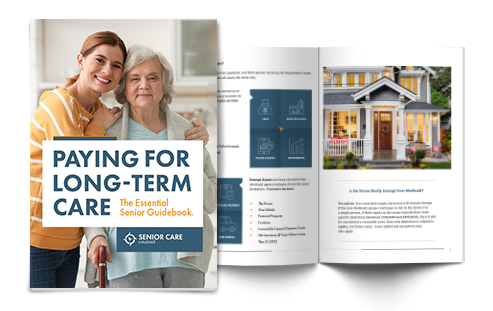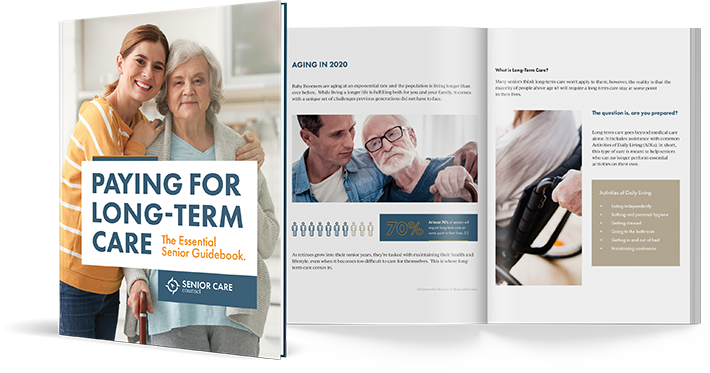What is Medicaid?

Medicaid is a government program funded on both the state and federal levels that is designed to provide health coverage for individuals with limited income and assets. Each state has its own Medicaid regulations and programs that typically run parallel to the federal rules. The groups of people who may be eligible for Medicaid-funded programs include children, people with disabilities, pregnant women, parents, and older adults. Here at Senior Care Counsel, our focus is on the senior population. So, although Medicaid covers a variety of groups, we’ll be concentrating on how it helps older adults.
The History of Medicaid
Let’s start at the very beginning. Medicaid was originally signed into law in 1965 as a part of Title XIX of the Social Security Act. The program itself has changed through the years–most recently as a part of the Deficit Reduction Act of 2005 (DRA). The current Medicaid program operates under the rules and regulations that were outlined in the DRA.
Read More: The Legislative History of Medicaid
Long-Term Care Services
The main area in which Medicaid assists older adults is by paying for long-term care. In most states, this pertains to an indefinite nursing home stay. Some states, however, engage in waiver programs that cover other types of care, such as in an assisted living facility or at-home care. Medicaid pays for over 60% of long-term care costs in the U.S., which is more than Medicare, Long-Term Care Insurance, and private payments combined. In order to be eligible for Medicaid benefits as they pertain to long-term care services, individuals must meet certain financial and non-financial criteria.
Medicaid Eligibility Requirements
Beginning with the non-financial requirements, in order to qualify for Medicaid, you must be:
- A U.S. citizen or qualified non-citizen
- Age 65 or older, blind, or disabled
- Residing in a Medicaid-approved facility, typically a nursing home
Now, the financial requirements for Medicaid are much more complex, and they fall under two categories: income and assets.
Income
In most states, your income simply must be less than your cost of care. Since nursing homes can cost upwards of $8,000 in many areas, this requirement is often met without issue. Other states impose an additional income restriction, which may require you to fund a portion of your income into a Qualified Income Trust.
Read More: What are Medicaid’s Income Restrictions?
Assets
When it comes to asset limitations, things can get pretty complicated. In short, the Medicaid applicant, whether single or married, can typically keep $2,000 in countable assets. If they are married, the healthy spouse can keep a much larger amount that varies by state but is between $25,728 and $128,640 in 2020. These allowances do not include exempt assets, such as the home, one vehicle, and personal items. Life insurance policies and funeral expense trusts below a certain amount may also be exempt.
Other Medicaid Rules
In addition to the eligibility requirements, there are many other Medicaid rules to be aware of, such as the lookback and penalty periods as well as the spousal impoverishment standards.
Lookback and Penalty Periods
In order to prevent Medicaid applicants from simply gifting their assets in order to meet the eligibility requirements, Medicaid imposes a lookback period of five years. At the time of application, the caseworker will review the applicant’s finances from the last five years and look out for any gifts or transfers for less than fair market value, also known as divestments. If the applicant made any divestments during the lookback period, they incur a penalty period of ineligibility. This period depends on the amount gifted and the state-specific divestment penalty divisor.
Read More: What are the Medicaid Lookback and Penalty Periods?Â
Spousal Impoverishment Standards
When one spouse enters the nursing home and qualifies for benefits, Medicaid has standards to protect the spouse at home and prevent spousal impoverishment. One of these standards is the Community Spouse Resource Allowance, which, as mentioned earlier, is much higher than the Medicaid recipient’s asset allowance. The healthy spouse is also entitled to a standard income, known as the Monthly Maintenance Needs Allowance (MMNA). This income standard varies by state and is dependent on the individual’s shelter expenses. If the healthy spouse’s income is below their MMNA, they will receive some of the ill spouse’s income each month.
Read More: What Happens When One Spouse Goes into a Nursing Home?Â
Since Medicaid is such a complex program with intricate rules and restrictions, it’s important to consult with an elder law professional before applying.
[FREE] GET OUR PLANNING GUIDE:
"Paying for Long-Term Care - The Essential Senior Guidebook"This guide takes a deep dive into the landscape of long-term care and how to pay for it without going broke, including the answers to your top questions surrounding Medicaid.
GET MY COPY
